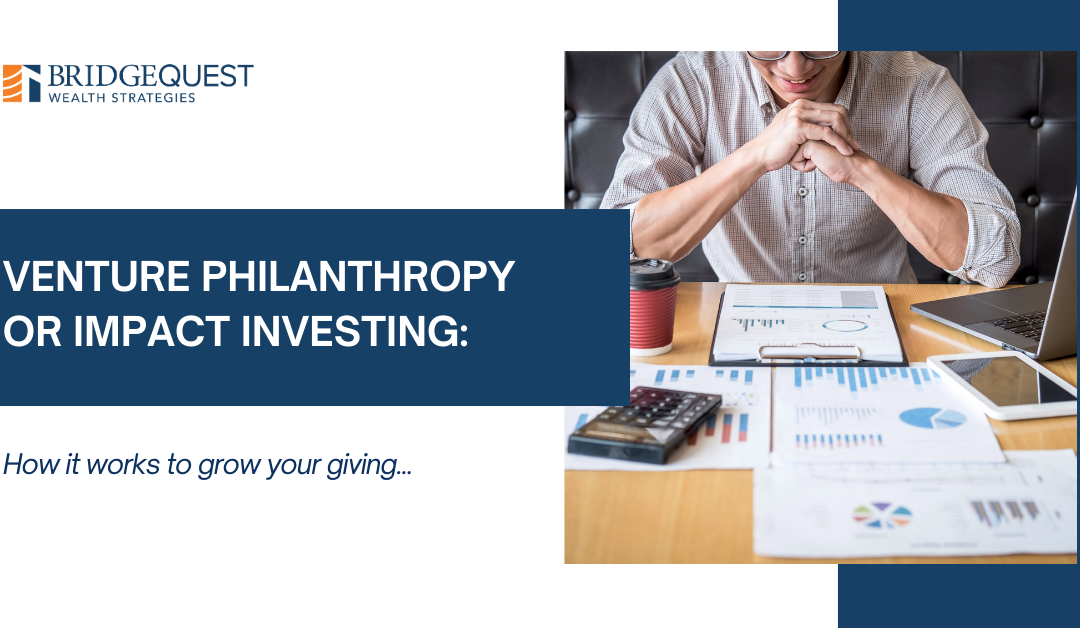While it may have gained increasing interest in recent times, especially as more investors look for ways to support causes that resonate with them, the idea of venture philanthropy is not new. In 1969, John D. Rockefeller III proposed that private foundations could be risk-takers and take on “an adventurous approach to funding unpopular social causes,” which sparked the idea for venture philanthropy.
Unlike regular philanthropy, venture philanthropists expect a return on their investment (ROI), gifting to organizations that align with their values and social impact goals, and making contributions to create positive change in the world that may also provide them with a bottom line. Venture philanthropy explores promoting a healthy society through socially responsible investments (SRI) to align with certain environmental, social, and governance (ESG) criteria.
This approach employs many of the principles of venture capital funding, involving a start-up or investing in a growth opportunity. Venture philanthropy sees significant engagement and management as financing strategies are designed toward an organization’s capital-building and scaling needs. Donors will often sit on the boards of organizations they support to oversee the critical details and assist in managing the business. There are several ways venture philanthropists can give including private foundations, university and government grants, and investment institutions.
Impact Investing
Impact investing aims for financial gains while benefitting environmental and social issues. The goal is to generate positive change in the world, allowing investments to be used as a strategy toward committing to corporate social responsibility (CSR). The majority of investing is done by institutional investors like banks, hedge funds, private foundations, and other fund organizations. A few examples of impact investing include investing in clean energy and helping the less fortunate. Impact investing typically falls into two categories:
· Impact first investors – Investors that prioritize achieving a social and environmental impact over monetary gains. These individuals accept returns broader in scope from the return of principal to market rate.
· Financial first investors – Investors that focus on the financial returns first, hoping to achieve a social and environmental impact.
These investors want to leverage the market to work for them through their investments.
Impact Investing vs. Venture Philanthropy
Impact investing focuses primarily on tackling social issues, whereas venture philanthropy has a broader scope encompassing social and environmental causes. Both investment strategies aim to generate a financial return while positively impacting the world. A key takeaway to understanding the difference is that venture philanthropy involves more than straight investing and the social returns generated. Risk is involved with both, as not all investments are guaranteed to yield a financial return.
4 Examples of Venture Philanthropists?
New Profit – A systems change approach that offers unrestricted capital to social entrepreneurs tackling issues like education, economic empowerment, diversity, early childhood development, and public health.
The Roberts Enterprise Development Fund (REDF) – This organization invests in United States-based social enterprises focusing on employment enhancement opportunities for underrepresented people, including incarcerated persons, people experiencing homelessness, and those with mental illness. REDF explores methods for social entrepreneurs to locate resources and services to help those in need while measuring their impact.
Robin Hood – An organization that invests in nonprofits in New York City to fight poverty. Robin Hood initiatives fund strategies to strengthen education opportunities and job training sessions and help raise capital for several social institutions.
The New Schools Venture Fund – This organization supports transforming public education by education entrepreneurs investing in edtech, leadership diversity, and school innovation. They champion sharing knowledge, networking and administering specialized guidance and support through goal-setting strategies.
4 Examples of Impact Investing
Microfinance – Microfinance is the process of offering small loans to low-income individuals or those who don’t use typical banking services. The goal is to help fight poverty by providing individuals with a way to start a small business.
Affordable Housing – This strategy works to provide stable housing for low-income families.
Education Technology – Utilizing educational theories, hardware, software, and other IT tools to give underrepresented areas more access to high-quality education.
Renewable Energy – Companies that produce renewable energy to help preserve the environment; for example, wind turbines, hydropower, and windmills.
The financial and tax implications of charitable giving, along with investing can be complex. To learn how the different giving strategies might impact you and your financial goals, consider enlisting the help of a financial professional. A financial professional can help you create a strategy and an overview of your long term financial picture and how your investments may impact you both in a positive or negative way.
Important Disclosures:
The opinions voiced in this material are for general information only and are not intended to provide specific advice or recommendations for any individual. To determine which investment(s) may be appropriate for you, consult your financial professional prior to investing.
Investing involves risks including possible loss of principal. No investment strategy or risk management technique can guarantee return or eliminate risk in all market environments.
Socially Responsible Investing (SRI) / Environmental Social Governance (ESG) investing has certain risks based on the fact that the criteria excludes securities of certain issuers for non-financial reasons and, therefore, investors may forgo some market opportunities and the universe of investments available will be smaller.
This information is not intended to be a substitute for specific individualized tax advice. We suggest that you discuss your specific tax issues with a qualified tax advisor.
All information is believed to be from reliable sources; however, LPL Financial makes no representation as to its completeness or accuracy.
This article was prepared by Marketing Solutions
Sources: Venture Philanthropy: What it Means, How it Works, Origins (investopedia.com) The Nuts and Bolts of Venture Philanthropy – Giving Compass Impact Investing Explained: Definition, Types, and Examples (investopedia.com)

